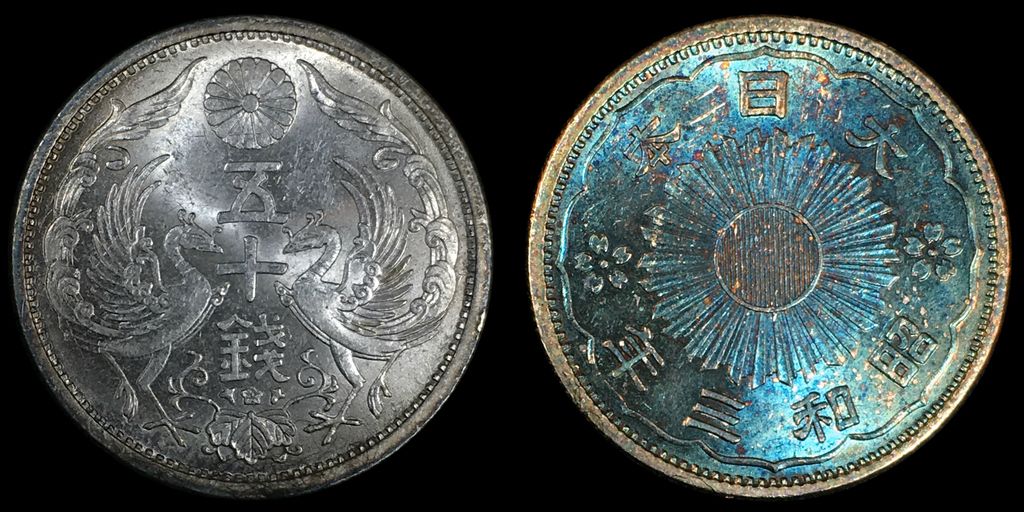Is it NT or AT ?
 Stork
Posts: 5,207 ✭✭✭✭✭
Stork
Posts: 5,207 ✭✭✭✭✭
This is what happens when you leave a coin on a window sill for 2 and a half years:

So, no chemicals, no messing with it before, during or after (I forgot about it because I set something on the desk in front of it). Does it qualify as NT, or is it AT because it was environmentally enhanced, even if inadvertently.
I wish I'd left the hoo-birds side up. Then they'd look like male peahens.

So, no chemicals, no messing with it before, during or after (I forgot about it because I set something on the desk in front of it). Does it qualify as NT, or is it AT because it was environmentally enhanced, even if inadvertently.
I wish I'd left the hoo-birds side up. Then they'd look like male peahens.

0
Comments
8 Reales Madness Collection
Toning is toning, however it was caused. A result of a chemical reaction causing corrosive byproducts to build up in a thin layer on the surface of the coin. Whether toning is "natural" or "artificial" comes down to the intent of the custodian of the coin at the time. You say you "forgot" about this coin, therefore your intent was not to create this toning. Therefore, logically, the toning is "natural". But coins can't talk or read minds, so it's impossible to tell the "intent" of the owner just by examining the coin.
It makes much more sense to talk about "accelerated" toning. This is where the coin is deliberately placed in an un-natural environment (such as inside a box filled with hydrogen sulfide gas, or smeared with petroleum-jelly-and-sulfur), with the intent of creating the vivid toning patterns in hours or days, rather than the years required for "natural" toning.
"Accelerated" toning is bad, because it involves chemicals which are not found in nature (or at least at levels far higher than are normally found in nature), and traces of those chemicals are often left behind on the coin to continue to slowly react and cause further corrosion. Thus, a coin subjected to accelerated toning that now has "lovely colours" might be a blackened, corroded mess in a year's time. It is these toning-accelerating chemicals that the "sniffers" deployed by the TPGs are looking for in their efforts to detect artificial toning.
Oh, and if you want the coin to look more "balanced", simply leave it on the window facing the other way up for another couple of years.
Roman emperor Marcus Aurelius, "Meditations"
Apparently I have been awarded the DPOTD twice.